Seeing With Our Ears
Hans-Christoph Rademann on his complete recording of the works of Heinrich Schütz
Heinrich Schütz is regarded as the first German musician of European stature. Carus has recorded his complete works on CD in 20 parts on 28 discs. The complete recording in one Box was issued this year. The guiding spirit of this project is Hans-Christoph Rademann, founder and conductor of the Dresden Chamber Choir, joined by vocal soloists and instrumentalists.
What was the concept behind this complete recording which is far more than a mere archival documentation?
I grew up in the tradition of the Dresden Kreuzchor with Martin Flämig as my choirmaster and his concept of Heinrich Schütz is totally after my own heart: he was convinced that the music was inseparable from the text. Schütz added a quasi ineffable dimension to the text, going far beyond what words alone can express. The complete recording demonstrates the multifaceted accomplishment of the composer’s musical concept.
What does it feel like holding the 20th part in your hands?
I am delighted. I have already begun to think about my next project, but it still remains a pleasant feeling to have concluded the cycle with such great success. It gives me a sense of fulfilment and makes me pleased that I have internalized these works on CD which are now ever-present within me. I also hope that this project will cause more people to become interested in Schütz.
Hans-Christoph Rademann is one of the most sought-after choir conductors and renowned choral sound specialists in the world. Under his leadership, the Dresdner Kammerchor released the first complete recording of Heinrich Schütz’s works together with the publisher Carus-Verlag Stuttgart.
Do you still remember what thoughts were passing through your mind at the beginning of the project?
I had great respect for the whole undertaking. Nevertheless, I began with the most difficult work of all: opus 1, the Italian Madrigals. It was my aim to prove that these works can also be performed with smaller forces and encourage as many choirmasters as possible to attempt a few pieces from this opus. I am considering a future project in which I prove that these works can also be sung by soloists which will appear sometime as a supplement.
Was there anything new you discovered when working on compositions by Schütz?
Firstly, I found that the aspect of the musical reading came very much to the fore. Schütz always acts as an illuminator of words – like an individual holding a lamp over the text. He perseveres extensively with the text in passages he considers to be personally significant and composes frequent reiterations. Anyone working with Schütz and his music will learn how to see with their ears.
Heinrich Schütz: Complete Recording (Box incl. 28CDs)
Carus 83.048
How does Schütz achieve this?
Well, an image is a visual sensual experience, but when the composer emphasizes particular words, he creates a musical image. An example is the splinter which one sees in one’s neighbor’s eye: this is a maximum of an eighth-note and two sixteenth-notes whereas the beam which one does not notice in one’s own eye sounds as an extended ascending line over an octave which is subsequently held over three bars. Does the huge beam then conceal the small splinter, meaning that listeners can literally hear a blind spot? The splinter is genuinely no longer “visible.” Another example is the motet Ich bin ein rechter Weinstock (I am the only true vine), in which Schutz actually conjures up a vineyard plateau in the score. This passage can even be perceived optically: if you turn the score by 90 degrees while hearing the composed garlands, you can also see a visual representation of bunches of hanging grapes! I am frequently barely able to withstand all the multiple impressions presented in this music. Anyone listening to Schutz will comprehend the essence of music, its meaning and its statements.
.
Heinrich Schütz: Complete Recording (Box I, Vol. 1-8)
Carus 83.041
There is a danger of a certain degree of mass production within a complete recording. How did you manage to navigate this problem?
We produced each recording meticulously and left extended gaps between individual phases which also gave us the opportunity to present the relevant programs in concerts. My Schutz team remained stable over the entire period with the same soloists, choral singers and musicians and we almost always made the recordings in the same church. In contrast, the individual works displayed immense variety: in the passions, you cannot be worried about extended passages while in the Psalmen Davids, you mostly hear simple structures because the sound agglomerations with up to four choral groups are so large in scale. In the Auferstehungs-Historie (Story of the Resurrection), you hear tendencies towards an oratorio form. The versatility of the composer is sufficient alone to prevent everything from sounding somehow all the same.
Is there one special work that moves you particularly?
Yes, of course there are several. I find the piece Auf dem Gebirge hat man ein Geschrei gehöret (High on the mountain) from the Geistliche Chormusik particularly moving. When children are at the focus of a composition, you immediately sense profound emotion in Schutz’s works and see the individual actually standing before you: here the composer reveals himself as a philanthropist who is particularly fond of children. In Mit dem Amphion zwar, he focuses on his grief at the death of his wife in a setting scored only for tenor and continuo. The piece lasts 15 minutes and is packed full of content: all the experiences in the partnership, the loss and also the hope that the couple will be reunited someday. In this work, you come extremely close to Schutz the individual.
(Interview: Jan-Geert Wolff)
Heinrich Schütz: Complete Recording (Box II, Vol. 9-14)
Carus 83.042
Heinrich Schütz: Complete Recording (Box III, Vol. 15-20)
Carus 83.043


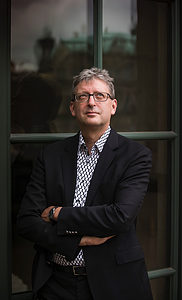
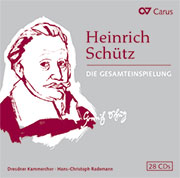
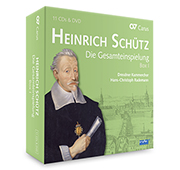
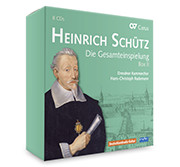
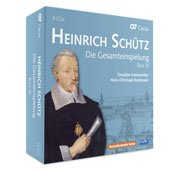
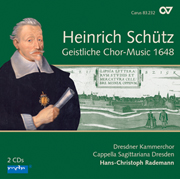


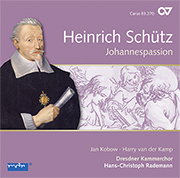
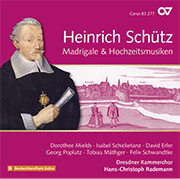
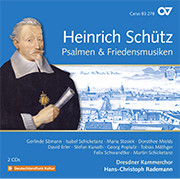


Leave a Reply
Want to join the discussion?Feel free to contribute!